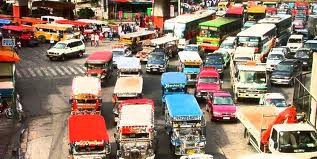Philippines: Manila to be uninhabitable in 4 years if traffic chaos not resolved

The city of Manila may become uninhabitable within four years if the current traffic chaos is not resolved, John Forbes, a senior advisor at the American Chamber of Commerce at the Philippines said. He warned that if the roads and other infrastructure are not upgraded immediately, the traffic mess in the metropolis would likely worsen.
"Metro Manila is at risk of becoming uninhabitable as annual new car growth increases to 500,000 by 2020," Forbes said. "While roads are being improved throughout the country, the National Capital Region urgently needs more limited access roads, especially skyways, and rail."
Forbes added that the new airport terminal in Clark should be built in the next two years, with a non-stop fast train connecting service similar to that in Kuala Lumpur, Hong Kong and Tokyo to elevate traffic congestion.
The Philippines is an important automotive market growth area in the region. Domestic vehicle sales in the country in 2020 are expected to rise 500,000 units, up from 350,000 units expected in 2016, according to the Chamber of Automotive Manufacturers of the Philippines.
Forbes is not the only one who has raised the traffic chaos in Manila. Navigation app Waze has described Manila as having the "worst traffic on earth" and the city often scores low points on liveable city surveys partly due to its traffic problem.
Dr Juan Perez II, the executive director of the Population Commission said: "What we've noted, which is exacerbating the situation, is the fact that Metro Manila is a place to work but the people who work in Metro Manila live somewhere else ... that means people have to commute to work from north and south of Manila."
The Japan International Cooperation Agency (Jica) has estimated that the capital loses around $50.6m (£35m) a day due to traffic from time wasted in travelling, reduced work hours and money spent on fuel. The National Economic and Development Authority has drawn up an ambitious Roadmap for Transport Infrastructure that targets to get rid of congestion by 2030.
A key strategy to shift travel demand to railways but to achieve this, more than 160km of new rail lines will have to be built. According to the Metro Manila Development Authority, the city ideally needs 8,000km of roads. It currently has 5,000km of roads.
© Copyright IBTimes 2025. All rights reserved.






















